Review: Manitou Mattoc Pro Fork - Reversed Arched, Foward Thinking
Manitou isn't afraid to do things differently, and the Manitou-Hayes group that they form a part of seems to be slowly gaining market share. The Hayes brakes have often been touted as standout performers in recent years, and Reynolds has enjoyed success in both enduro and downhill World Cups. Their forks, whether that's the upside-down Dorado or the reverse-arched Mattoc and Mezzer, may not be as as commonly seen, but they've garnered a highly loyal fan base over the years.
The Mattoc Pro fork uses 34mm chassis, and although Manitou talks about lining the Mattoc up against not only the 1800g RockShox Pike but the 2kg Lyrik as well, the fork could be argued to have something like the 1350g SID firmly in its sights, too. I'd say this is an XC fork that has applications outside its remit rather than a trail or enduro fork that can be shrunk down to XC lengths. The fact that the Mattoc Pro splits the difference in terms of weight, and has been raced at World Cup level XC races lends this idea some credence.
The Mattoc Pro fork uses 34mm chassis, and although Manitou talks about lining the Mattoc up against not only the 1800g RockShox Pike but the 2kg Lyrik as well, the fork could be argued to have something like the 1350g SID firmly in its sights, too. I'd say this is an XC fork that has applications outside its remit rather than a trail or enduro fork that can be shrunk down to XC lengths. The fact that the Mattoc Pro splits the difference in terms of weight, and has been raced at World Cup level XC races lends this idea some credence.
Mattoc Pro Details
• Intended use: XC / trail
• Travel: 110 to 150mm
• Wheel size: 29 or 27.5"
• Stanchions: 34 mm
• Offset: 44 mm (29") 37 & 44mm (27.5")
• Adjustments: HSC, LSC, rebound, two positive air chambers
• Weight: 1708 grams actual (179mm steerer)
• $550 Comp & $800 Expert versions also available
• MSRP: $1050
• More info: Hayesbicycle.com
• Intended use: XC / trail
• Travel: 110 to 150mm
• Wheel size: 29 or 27.5"
• Stanchions: 34 mm
• Offset: 44 mm (29") 37 & 44mm (27.5")
• Adjustments: HSC, LSC, rebound, two positive air chambers
• Weight: 1708 grams actual (179mm steerer)
• $550 Comp & $800 Expert versions also available
• MSRP: $1050
• More info: Hayesbicycle.com
The Mattoc Pro reviewed here is distinct in the lineup thanks to its silver crown. However, there are also the lower priced Comp and Expert versions that feature a similar chassis but different internals. The Pro and Expert chassis are the same, but the Comp has less crown machining on a hollow bore crown and uses straight wall legs. The Comp and Expert use the same Incremental Volume Adjust (IVA) Airspring, which operates like a more traditional system with one valve and ramp control via volume reducers. The forks all feature different dampers and, as so often is the way, the more you spend the more adjustments you get.
Chassis
The 34mm legs of the Mattoc are squarely in the middle of trail riders' expectations and align with offerings from Fox and Ohlins in terms of stanchion diameter. The headline is of course that reverse arch. I don't believe that a bicycle has to look a certain way, and I am not averse to reversed arches. I think there are better and worse executions, but the same could be said of both orientations. I do like the fender, silver crown, and smooth gloss finish.
The fender itself is a soft malleable plastic that has stood up well to knocks and bends over the last year. However, its lack of stiffness does mean that should you take the fork off and lean it against anything it is soft enough to bend and distort. This isn't a big deal, but it will be something you notice should you travel with the front wheel removed and the bike in the back of your car. My fender looks to be bent slightly off-center and is unwilling to take its former shape.
The damper sits in the drive side leg of the fork.
The axle is a tidy system that is both novel and intuitive, but it's also got quirks when it comes to taking the front wheel out that most notably come to the fore when traveling. Should you only have one hand free, you are normally able to thread the axle in with no tool to ensure it doesn't fall out and get lost. The design of the Mattoc Hexlock Axle means that it is the axle that is held firm via a spanner-like interface in the lower, which is fastened on the other side via a floating 6mm bolt that brings it up to tension. It works well, but I don't think it's in any way an improvement compared to a standard bolt-through, irrespective of any claimed benefit of increased stiffness.
As mentioned there are some bleed ports to the lowers that are activated by removing two small bolts. While this might not be as easy as the Fox bleed ports, it's better than nothing, is great to see on an XC-ready fork, and is relatively painless to do.
Another appreciated feature of the lower is the option to either run the front brake hose clamped to the arch with a cable tie or through a small plastic clamp on the fore side of the fork. The routing is very neat, and manages to undermine the ugly cable routing that reverse arch forks can often yield. The brake mount itself is a 160mm post mount. This will give riders options, but I would contend that 180mm rotors are the go-to for everyone except the most ardent XC racers.
I think it's a very good-looking fork, reverse arch or not.
Spring
Around ten years ago, there was the bottom-out revolution when RockShox brought air spring-tuning to the masses with their Token system. Adding volume reducers to the air spring is something we're very familiar with now. For the same pressure, a rider could have a fork less likely to bottom out, or they could run lower pressures as a consequence of having reduced volume, and have a fork that offered a similar bottom out resistance but was more willing to break into its stroke.
The 'it's-too-good-to-be-true' trade-off was and is that sometimes low-volume air springs can feature too much ramp, and dive through the mid-stroke before entering the more supportive latter phase. That can result in a fork that feels like it switches on half way through the stroke, or falls until it hits a wall of support.
Manitou's three-chamber Infinite Rate System isn't totally novel, but it does have features that set it apart when comparing it to offerings from brands such as Ohlins. In theory, they both work similarly - they both have a ramp-up chamber set via its own valve and another valve that sets pressure for the positive chamber and negative chamber. One distinction would be how the positive/negative air chamber is filled. On Manitou's system, it doesn't pressure the positive chamber which the negative then equalizes off but rather fills them both simultaneously. Compared to the Ohlins three-chamber system, the Manitou has a lower difference recommended between the main and ramp pressure. I think that for experienced riders the style of this system is better, but it has pitfalls for some who aren't so inclined to fettle. It also places a greater emphasis on the damper to support the fork in the midstroke.
These systems, which do offer a greater level of tunability, can be somewhat counterintuitive to use, and the Dorado IRT is no different. For instance, if you wish to have a greater level of end stroke support you would add pressure in the ramp up. This in some instances can reduce the ride height of the fork because the threshold needed to activate and compress that second air chamber is achieved later in the stroke. Adding air to the main chamber is simpler, with it making the fork more linear throughout its stroke. Should you bolt a Mattoc to your bike, it is worth considering the shape of a progressive air spring, and how adding air to the main chamber can shallow out a curve before steepening it.
The air spring also has spacers to add or remove travel. This means that you can change the fork stroke without having to buy expensive air shafts. It's relatively simple and can be honed into fine art that doesn't take more than a handful of minutes with the fork off the bike and held horizontally.
Damper
The MC2 Damper is a clever piece of kit, and it's got almost every feature that could be asked of a modern suspension unit. One might argue that the lack of differentiation between low and high-speed rebound is a lack of a feature, but I would contend that the return speed is relative to the spring and subsequently one dial is often all that is needed and will throttle the oil flow effectively. Unlike our compression circuits, which see a variety of different size impacts and differing speeds, in a plethora of different combinations, forks tend to return more universally.
Hydraulic bottom-out is becoming something mountain bikers are more familiar with. It essentially offers a greater level of compression damping towards the end of the stroke. This is a great way to take the sting out of large compressions and could offer a greater level of freedom with setup in terms of the air spring because the end stroke is being given a helping hand from the damper. The hydraulic bottom-out on the Mattoc Pro comes into action in the last 30mm of travel.
The way the compression circuits work is inverse to a traditional damper. Normally, oil flows through an orifice. When the whole column of oil is pushed in one compression, that hole will not be able to accommodate, and subsequently the oil will divert around and through the high-speed circuit. This is why in some ways low speed is often merely about setting a threshold of when the oil diverts to the high speed, and why high speed adjustments will have an effect on the overall damping level of the suspension unit.
The MC2 damper differs because, much like the Charger 3 damper from RockShox, the oil first flows through the high-speed adjuster before reaching the low speed. This means then that with 4 different clicks of high speed, you essentially have 4 different foundations from which to add low speed. I think it's a tidy and well-executed system. My observation would be, again similar to the Charger 3, that this system is better for achieving a better setup faster, but might not give more experienced riders that distinct feeling between low and high-speed damping that they wish for. It feels as if the two overlap more.
Setup
I have used the fork over three bikes over the last year, in travel ranges from 130 to 150mm. Mainly it's seen action on a Cannondale Habit and is currently on my personal Commencal Tempo.
The stock pressures do offer a very good starting place, and I would suggest using the damping to bring that setup to your feeling. The air-spring is very sensitive, and Manitou's suggested pressures are quite accurate. Plus, the damper settings are very effective. During telemetry testing, a single click of high-speed compression would result in around a 2% change in dynamic sag. The hydraulic bottom out can also offer a red herring when setting up and you might not be getting full travel, but that doesn't mean you're not running your fork too soft.
Manitou has got the small details right. The hose-routing options, fender, and bleed ports are all welcome additions.
The compression tune isn't light, per se. It's very appropriate for an XC or light-trail fork. However, for the 150mm travel setup, it can feel a little light. It's of course relative to what and how you ride it, but also the fact that we tend to run longer travel bikes on rougher trails. It was never outgunned, but I ended up running the HSC closed on 140 and 150mm applications and 1 from closed on shorter travel bikes. At greater lengths, the fork never felt flexy to the point where it became an issue, but the ability to hit things very hard is one of the fork's charms at around 130mm, and that is lost a bit as a degree of flex comes in in those longer travel configurations.
The single valve at the bottom of the fork is there to service both air chambers, however, my shock pump didn't inflate both chambers when connected, which was annoying. I think the thread-on head wasn't deep enough to depress the valve.
Ride Impressions
The novel axle works well, even if it isn't possible to screw in without tools. Not a big deal, but you do notice it when you don't want to thread the axle back in for safe keeping.
The simple truth is that the Mattoc Pro is a very good fork, with a lot of the features you would want. I would contend that it's on par with offerings from bigger, more glitzy players. However, there is a caveat - this is a fork that suits people who enjoy having a more damped feel and a slightly softer spring. If you wish to run the compression more open, I think you will find the air spring wallows and lacks adequate support. This isn't a bad thing, but rather just might take a different approach than some are used to. At $1,050 USD, it isn't exactly a budget proposition whichever way you cut it. Manitou does offer different levels, but its top of the line Pro is essentially the same price as a Pike Ultimate Charger 3 ($1,054) or a Fox GRIP2 Factory 34 ($1,039).
For some forks and shocks, you can get the setup quite close, in regards to support at least, with the adjustments quite open. You might also find that the adjustments only really have an effect when the spring rate is within a certain range. This is not the case with the Mattoc Pro. The adjustments have a wide variety of useable ranging, meaning that if you want to run everything open you will find it to be lacking support. If you do follow the setup guide, and perhaps commit to running more damping than you may typically do, you can get the fork to be composed, active, and able to withstand big hits.
This also lends to a setup that works well with the position-sensitive damping at the end of the stroke. Should you run the compression more open, the hydraulic bottom out can give the sensation of switching on at the end of the stroke. This change in shaft speed not only inhibits getting full travel but can also undermine confidence and it makes the fork feel like it operates in two stages. I believe running more compression makes this transition smoother, and can subsequently instill more confidence, plus it will mean you end up with a spring rate that's suitable and not one that's overcompensating.
The rebound range of adjustment is also wide, and I found that it's one of the few forks that I don't run fully open. I think this fast-rebound also bleeds into the damped setup preference of the fork, as getting up and out of the stroke between hits gives the damper and great chance to cycle oil and offer support.
Pros
+ Downhill features in a race-ready XC or trail fork.
+ Ultra adjustable.
+ Offers a fork that combines great tracking with big-hit-ability.
+ Sensible features including travel adjusts, mudguard, and bleed ports.
+ Suits riders that like a damped feeling.
Cons
- Requires patience during setup.
- The 3-chamber air spring can be counterintuitive, but worth experimenting with.
- High and low-speed compression adjustments don't feel particularly distinct.
- Suits riders that like a damped feeling.
Pinkbike's Take
Author Info:
Must Read This Week
Sign Up for the Pinkbike Newsletter - All the Biggest, Most Interesting Stories in your Inbox
PB Newsletter Signup
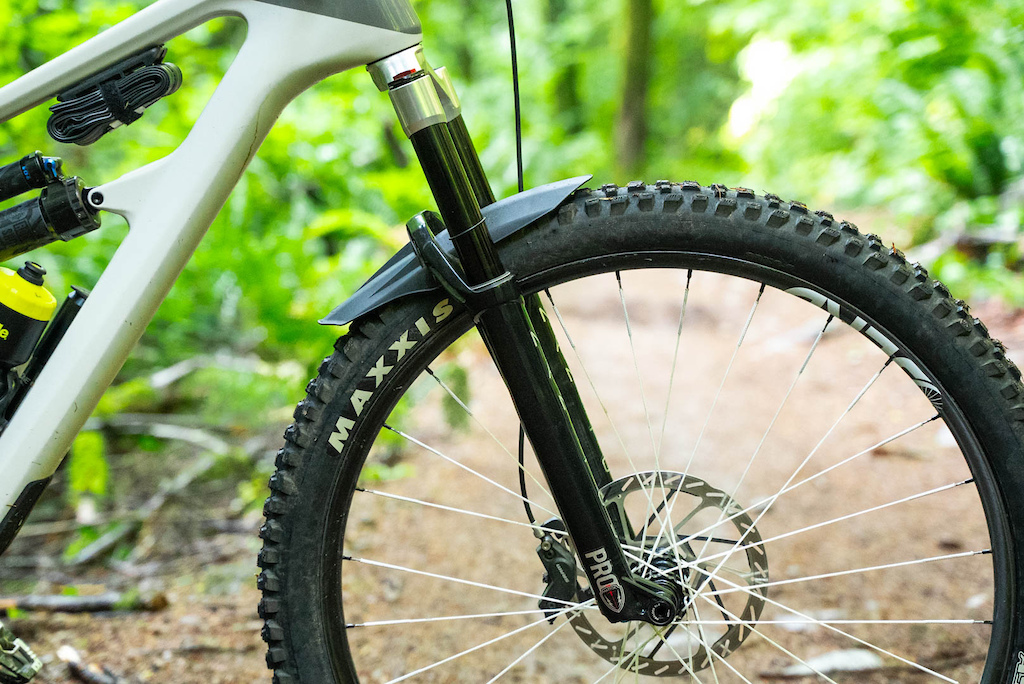
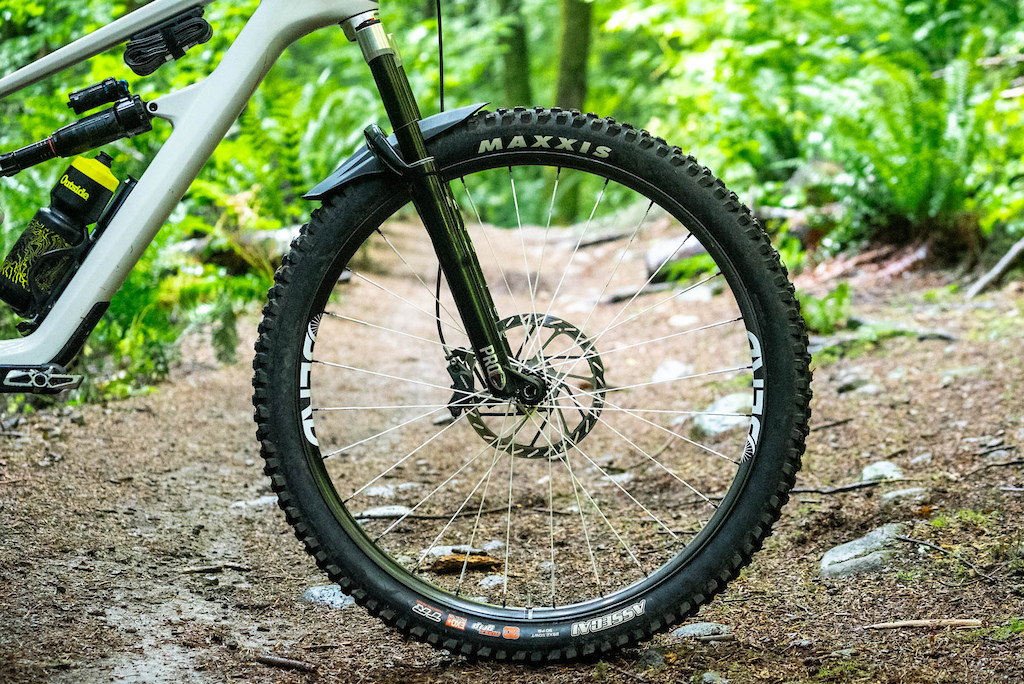



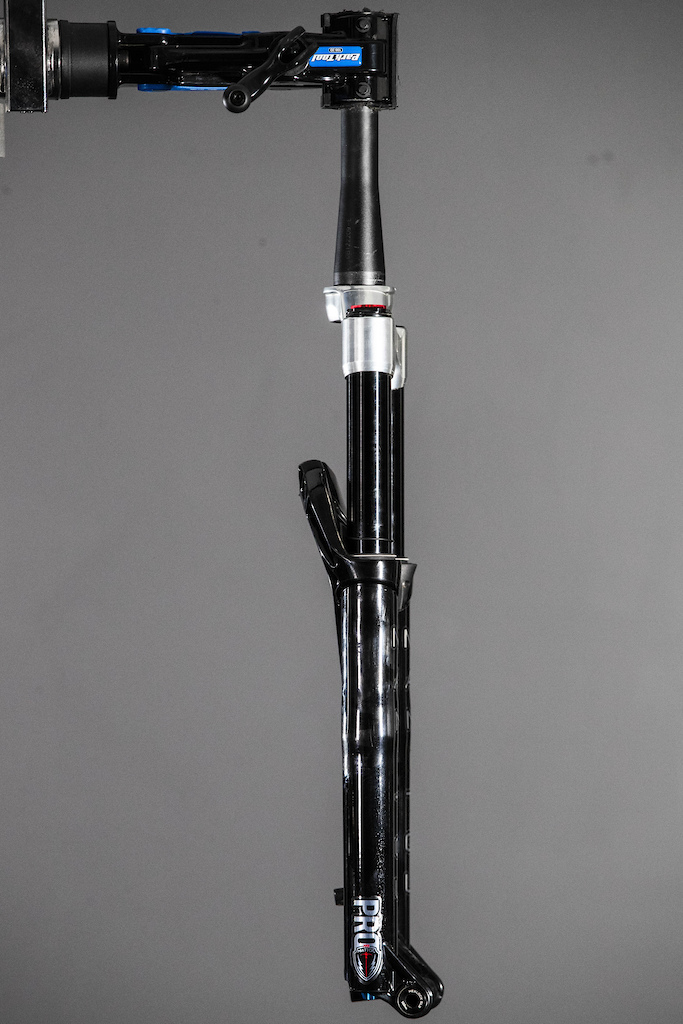
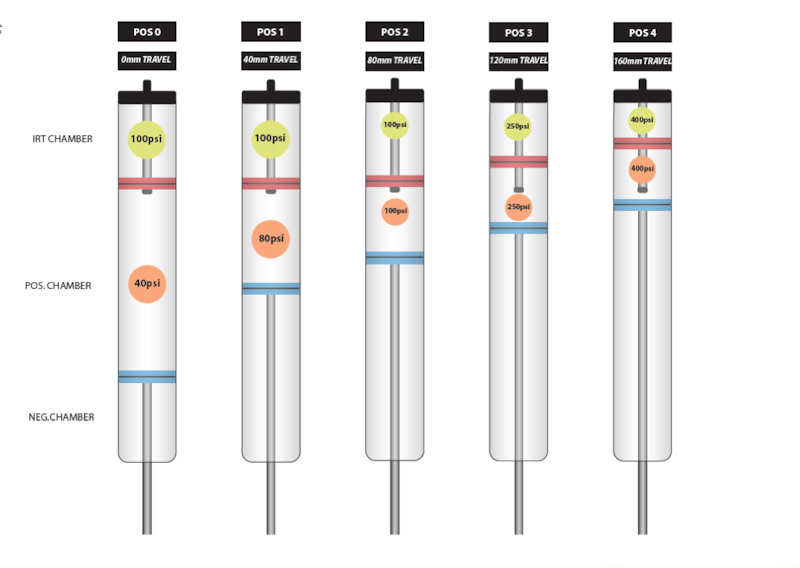
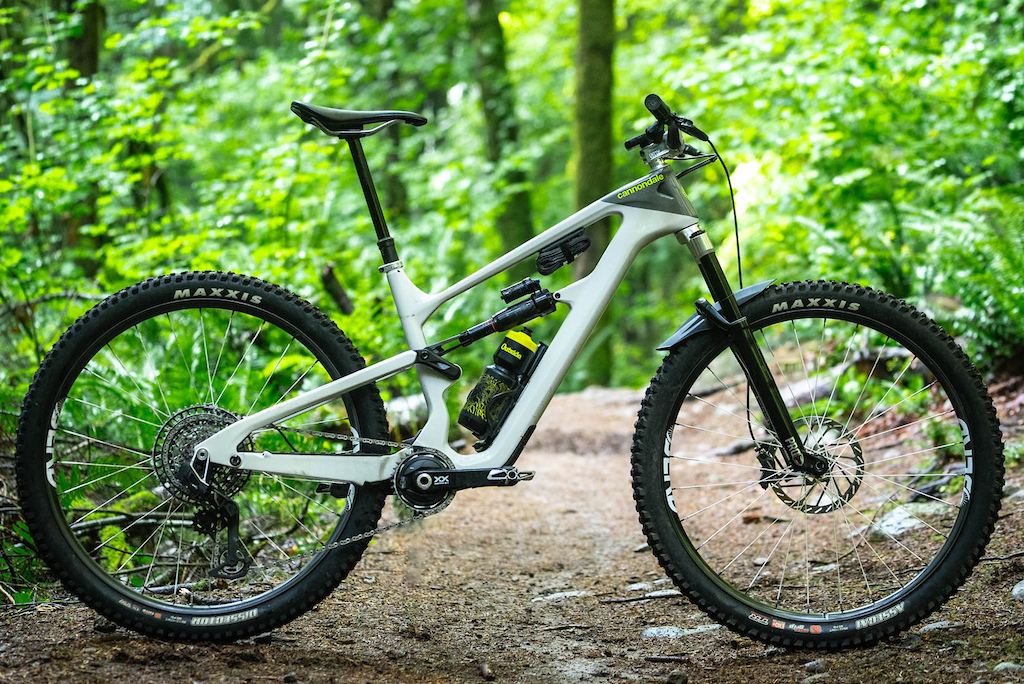
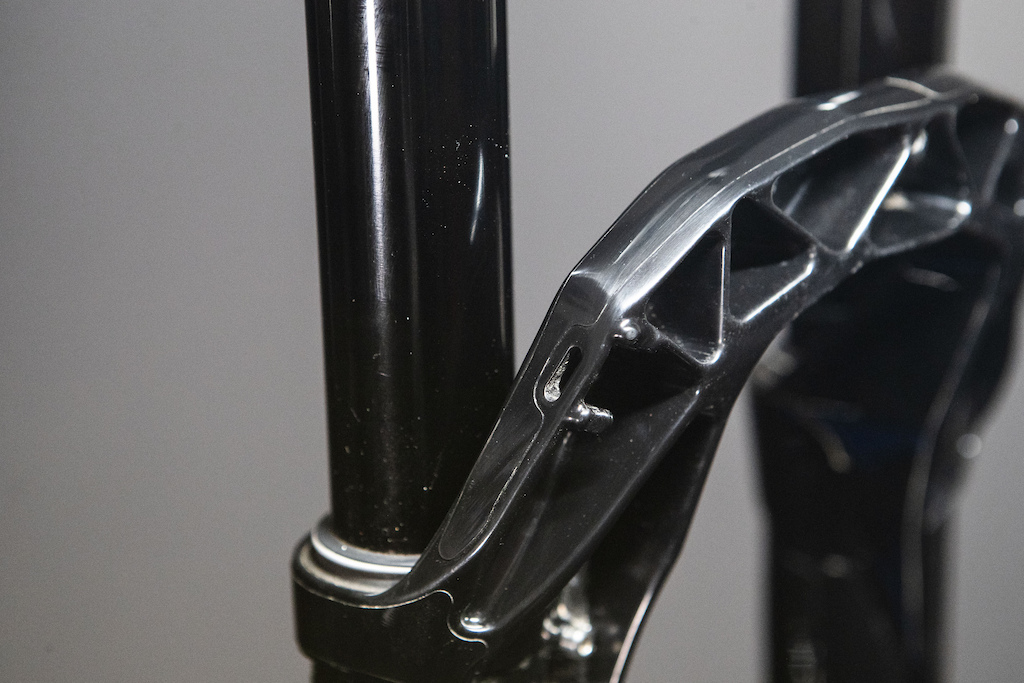
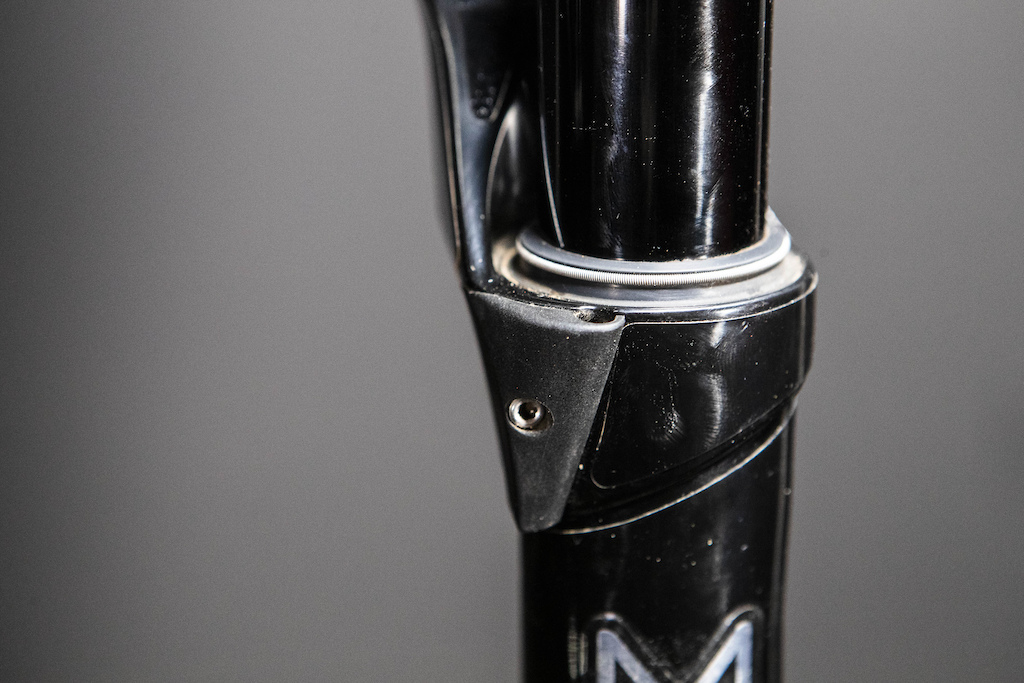


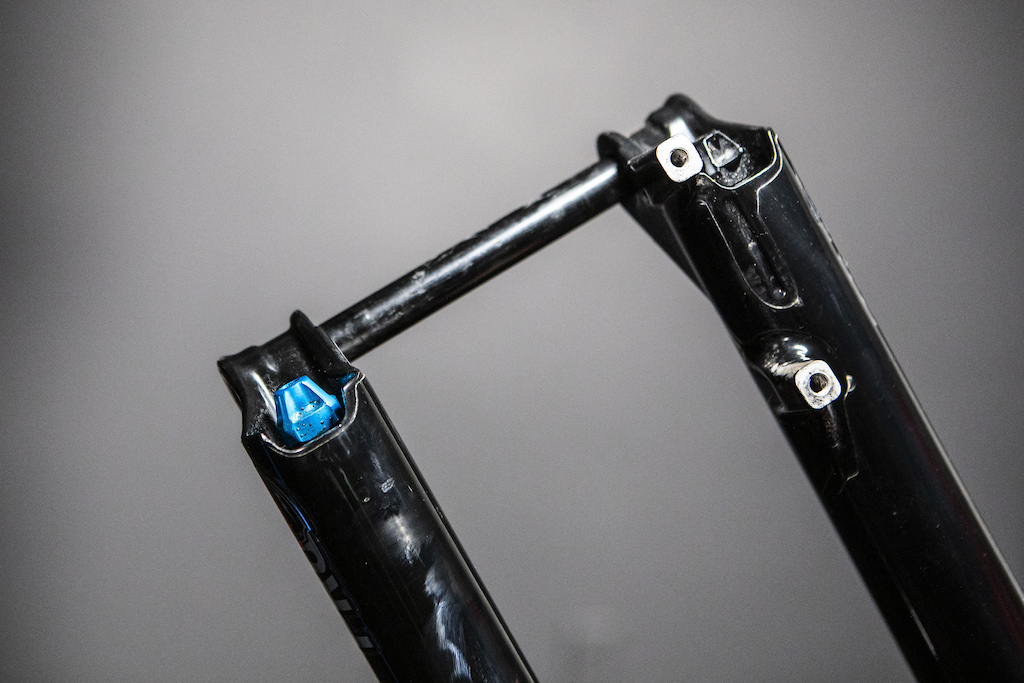

 Member since Jun 3, 2014
Member since Jun 3, 2014
Like you know Coal.
"Compression is red, damping is blue, unless it is a Manitou"
Bump (compression)= Blue
As the fork compresses, the piston within the damper assembly begins its descent, exerting force upon the hydraulic fluid contained within the damper's chambers. This fluid, typically a specialized oil engineered for its viscosity and thermal stability, is forced through a series of precisely machined ports and orifices within the piston and surrounding valve assemblies.
The geometry and arrangement of these ports and orifices dictate the flow characteristics of the hydraulic fluid, imparting resistance to the compression motion. Each port and orifice is meticulously dimensioned and positioned to modulate the flow of fluid, controlling the rate at which energy is dissipated as heat and damping forces.
Simultaneously, the interaction between the piston and the damping circuits, comprised of carefully stacked shims and valving components, further refines the damping response. As the piston moves, it displaces these shims, altering the effective flow area of the damping circuits and thus influencing the damping forces experienced by the fork.
Meanwhile, within the damping circuits themselves, the fluid undergoes rapid shearing and deformation, a consequence of its viscous nature. This shearing action generates internal friction within the fluid, contributing to the dissipation of kinetic energy and the damping of the suspension motion.
In parallel, the precise machining of components such as seals, bushings, and guide rods ensures minimal friction and stiction, allowing for unhindered movement of the fork assembly. Each surface finish and tolerance is optimized to mitigate energy losses and maintain the fidelity of the suspension's response to rider inputs.
In essence, the compression of the fork sets in motion a symphony of finely orchestrated mechanical interactions, where the interplay of fluid dynamics, precision machining, and engineering design culminates in the sublime damping performance of the Manitou MC2 damper.
But I also have no idea of what Im talking about I just posted this comment to waste your time.
"Unlike other forks, Manitou's system fills positive and negative air chamber simultaneously. The IRT (3rd air chamber) replaces tokens etc etc."
vs what you wrote:
"One distinction would be how the positive/negative air chamber is filled. On Manitou's system, it doesn't pressure the positive chamber which the negative then equalizes off but rather fills them both simultaneously. "
Sorry, I've been afk for a few hours and see theres been a ton of replies since my original comment. Pabsm80 pretty well nailed my main gripe, there are a few others but they were all relatively minor. I'll cover them briefly at the end of this comment, but as I say they are small fry really.
Re: the 3rd chamber, your original wording was a little hard to follow, and I don't remember exactly what was said. The new wording is certainly easier to read through.
"These systems, which do offer a greater level of tunability, can be somewhat counterintuitive to use, and the Dorado IRT is no different. For instance, if you wish to have a greater level of end stroke support you would add pressure in the ramp up. This in some instances can reduce the ride height of the fork because the threshold needed to activate and compress that second air chamber is achieved later in the stroke"
Despite the revised wording, I still disagree with the fundamental idea behind the above statement - that being that the fork will ride lower in the travel if you increase pressure in the ramp chamber and leave everything else the same.
It is true in this case that the fork will have to compress deeper into the stroke before the ramp piston begins moving, however this will increase the springrate in the mid stroke, not reduce it, resulting in an increased active ride height. When the ramp piston begins to move it effectively reduces ramp, rather than increasing it. (imagine the ramp piston as a stack of volume tokens, and that when the piston moves - when the main chamber pressure matches the ramp chamber pressure - these tokens become smaller.) So the result is better mid stroke support (while the ramp piston is stationary) without excessive end stroke (once the ramp piston is moving).
I'll admit at this point I am also struggling to word this clearly... and I'm only writing a couple of paragraphs. So I do understand the challenges of writing about this stuff - something you regularly do far better than me.
Other small gripes:
Focusing on the very minor increase in complication fitting the axle (ie you have to insert the axle from one side, then turn an allen key at the other side) while not giving more than half a throwaway sentence about the fact that its a hexagonal axle, that literally can not twist in the dropout once installed. If youve ever lived with any triple clamp forks with any style of round axle, you will have experienced loosening your axle after a heavy crash and seeing your twisted up fork suddenly ping back to being straight. Hex lock axles completely eliminate this twisting issue.
Re: the fork wallowing without more than average damping, this doesn't really tell us much if we don't know your air spring settings. Are you getting this effect with the main and ramp chambers at max pressure? If not, then what is the limiting factor on the pressures you are running? My guess would be that you would be running as much pressure as possible in the main chamber before it really starts to eat into the small bump performance, and then as much ramp pressure as needed to give good support before it starts limiting the useable travel. However I am guessing here.
Please don't take this as me just slating your writing. I genuinely enjoy most of what you produce. The above is just my honest feedback. I am often told (or at least hinted at in a roundabout and non commital way) that I'm overly forthright. I mean no offense. I just like to have proper discussions.
Wegen Reading It Sound s Like the Fork IS kacking in comparison to a Pike or Lyrik,gehen the conclusión saya It IS great, what Your review Text would Not given away. Just compare the way Your qrite a zeb ultimate or Pike review ans compare.
2. I Know you can setup These 3 Air Chambers top almost every Ride charavteristic that you want. Your Sax that IT IS Not supportive. Why Not Just add more Air. And try changes of both pressures. The nattoc IS very smooth, so 20% sag ans a bit more irt pressure do Not make It harsh
The manufacturers recommendations are Just that....recommendations. some comoanies make Thema to Firm, EXT, some too soft and besides IT depends on the head Angle as Well.
So If ITS too soft adjust sag or the secondary Chambers. There ist a nice MEZZER PRO review on the loamwolf were te mechanic fromm Manitu recommended the reviewer a certain way of setup process. Try that out
I'm wondering if a misunderstanding of the engineering colored your impressions of the ride experience. The fork *should* be quite supportive, or at minimum can be set up to be quite supportive.
?
Wrong description: LOWER Mainchamber pressure but higher irt pressure to get sensitive Initial stroke and higher midzroke Support. Description in every correct manitou review and on the manitou Site as well as their Instructions ;-)
You're right, it is maybe a better mental model to imagine at a given chamber pressure what the displacement would be - so at the same instantaneous pressure, the 3 chamber fork sits higher because of the smaller effective chamber size, given the same starting pressure. So you can run a lower initial pressure while achieving the same sag and more midstroke support as a 2 chamber fork.
You need to strip your air side and get the oil out. Rebuild and grease. Don't use too much splash bath oil in the spring leg when you do an oil change.
took a while to do though and was miles better than all my previous forks- multiple RS ultimates , ohlins 36 etc
Likewise change the Q215 air seal for a Q214 and the stiction will go almost completely away.
He said that te Mattoc 3 Air Chambers IS fantastic and spoke of Other "some" forks
You too :-)
Thanks.
If one can bleed a brake he can bleed a mc2 damper and before add or Exchange one shim for a thicker shim.
Problem solved for a heavier or Harder charging Rider at 150 mm travel
Why does XC need lighter damping? Maybe absolutely lighter since the riders are generally lighter, but I'd bet most XC riders are using relatively more damping. They tend to hate bob, so the LSC will be cranked up, and with less travel they'll probably crank up the HSC to keep it dynamically high in the rough stuff to help prevent bottoming. It's way easier [for non-racers] to run a much softer damping when there is more travel to play with, not to mention more comfortable when you're not going race-pace.
Cheers
I presented some points (I wasn't sneering when I made them; you might be projecting) as to why an XC fork, especially a typical shorter travel one, could benefit from firmer damping. I haven't heard any actual arguments as to _why_ an XC fork would always require lighter damping, only the acausal declaration that lighter damping means XCish.
It's now cynical to ask for explanations?
As for big-B Bob... well, Robert's your mother's brother, and uncles are always fun!
Damper is that new style tune. Fast and wide range
Air spring can be tricky to set up but the amount of protection/hold up from dual chamber forks is unmatched
Manitou forks are for the tuners and can outperform most if you take the time to set up.
If you know you know....
Others could Sound the Same regarding their only Fox or RS Equipped bike fleet ;-)
Sorry ich someone IS as enthusiastic about His Manitou stuff
and what quirks? build a bridge and get over the old manitou of the old days. They have a legit fork and you don't have to always buy the cookie cutter Fox/RS that everyone and their mom has....
"For instance, if you wish to have a greater level of end stroke support you would add pressure in the ramp up. This in some instances can reduce the ride height of the fork because the threshold needed to activate and compress that second air chamber is lower"
This section isnt correct, adding pressure to the ramp chamber will make it harder for the first positive to start compressing it.
Also worth noting, that although manitou doesn't explicitly say you can, but it's possible to change the travel of this air spring with only a shockpump, connect like you would to add pressure to main positive/negative Chambers, compress the fork slowly to desired travel, take pump off and there it stays. This is how I run my mezzer, no travel spacers at around 150mm travel, I.e. added the 30mm ish of travel volume to the negative side. And it feels phenomenal for it.
@lonzo in theory yes to both, as the topout is now handled purely by the negative air spring and not some kind of rubber bump stop, meaning the positive and negative air springs are fully balanced meaning its purely seal static friction you have to overcome, if a fork is resting against a rubber bumpstop then it's the static friction plus what ever the miss balance in the air spring is, minus what ever force the rubber bump stop is providing, however due to the hysteresis of rubber it won't be as good as proper air balance. This is why you actively want some negative travel. Also why rockshock c1 air spring didn't feel as good as the b1.
Also by using a significantly larger negative volume the negative spring is active way deeper in the travel, due to the extensional curve of air springs it makes a big difference, you will have to run higher main and ramp pressures due to this, but that doesn't make it too hard. I run iirc 30 and 40psi, respectively, over recommended pressures for my weight to get the sag, mid stroke and ramp I want.
I've been riding Mattocs for nearly a decade, got the new Pro on my Zerode set at 150mm, works great, no complaints other than I wish it went to 160mm, but I suppose that's where the Mezzer steps in.
I don't know that the new Mattoc Pro is over damp, perhaps on a lighter rider, but I find it very active at my weight 195#.
For MC2 you should max out the LSC before turning the hsc.
Manitou's setup guide is hard to follow.
Set irt as recommended
Pressure in main to 22% sag
Rebound as you Prüefer
Compressions completely open
Ride
When end of travel/bottom Out is too easy, pressure up 3 psi
If first part of travel is used to easily, use lsc click by click
Not enough initial Support? turn lsc open again and pressure up by 3 psi
Then again close lsc click by click
Only then pressure up again when lsc is completely closed.
Leave hsc alone or Max 1 cllick from open
Thus male travel Management Tagen care of by the pressure of main chamber for first half of travel and irt for later Support and bottom Out. Lsc only for fintuning
Rebound as fast according to your riding style as possoble that it doesnt start Pogoing or hitting you.
"During telemetry testing, a single click of high-speed compression would result in around a 2% change in dynamic sag"
Cool fork though!
Might be worth double checking.
I rather like my Pro Mattoc on my '23 Smuggler and it certainly assisted in me reaching my 28# ready to ride weight in a size L, with tools on board.
Comp has less crown machining on a hollow bore crown and uses straight wall legs, so is slightly different, but the Pro and Expert share the same chassis.
"This is why in some ways low speed is often merely about setting a threshold of when the oil diverts to the high speed, and why high speed adjustments will have an effect on the overall damping level of the suspension unit."
If you look at the charts SRAM provided for Charger 3, they changed it to be _more_ like this. The height of the knee in the curve, the threshold of force when the HSC is activated, is controlled _exclusively_ by the LSC setting in the Charger 3, that's the major difference. If the MC2 is similar, then they got closer to what you described as less than ideal.
It's just that Mattoc can be reduced down to 120mm. And Sid (35mm stanchion) can be bought as long as 120mm.
So, they overlap in the travel. Just not really overlap in the damping performance with Sid's dinky Race Day damper.
Manitou might put R7 Pro as a Sid competitor. But then the current R7 Pro (32mm stanchion at 1650g) is old and need update. It doesn't even make sense when Mattoc is only 100g more with stiffer 34mm stanchion, more travel, IRT, HBO, and better damper.
Irrespective of any increased stiffness? That's exactly why it would be considered an improvement! It's not complicated to use, doesn't require any special tools, and all fork thru-axles are brand-specific and often model-specific already, so it doesn't matter at all that it's not that same as anyone else's. If it _is_ stiffer, it _is_ better, period.
By that thinking, one could say that "standard" thru-axles (who TF says "bolt-through"?) aren't in any way an improvement on QR axles, irrespective of any claimed benefit of increased stiffness".
nevermind, some quick googling tells me I am wrong and you are right